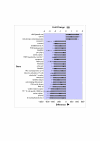DNA array analysis of interleukin-2-regulated immediate/early genes
- PMID: 12459040
- PMCID: PMC149405
- DOI: 10.1186/1476-9433-1-2
DNA array analysis of interleukin-2-regulated immediate/early genes
Abstract
BACKGROUND: Lymphocyte activation culminates in blastogenesis, cell cycle progression, DNA replication and mitosis. These complex cellular changes are programmed almost simultaneously by multiple ligands and receptors that trigger specific signal transduction pathways and transcription factors. Until now, the discovery of the genes regulated by each ligand/receptor pair has been hampered by the technologies available. RESULTS: To identify interleukin-2 (IL-2)-responsive genes, human peripheral blood mononuclear cells (PBMC) were pre-activated with anti-CD3, rested, and restimulated with IL-2 for 4 hr. Gene expression was analyzed using Affymetrix U95Av2 oligonucleotide arrays. To determine the most stringent parameters to score a gene as a bona fide IL-2 target, the expression of 19 known IL-2-regulated genes was examined first. All were induced at least 2-fold, with a difference in fluorescent intensity of >/= 100 at p < 0.05. An additional 53 unique genes met these criteria. To determine which of these were immediate/early IL-2 targets in T cells, purified T cells were stimulated with IL-2 for 4 hr in the presence of cycloheximide to prevent secondary gene expression. Of the 72 genes identified in PBMCs, 20 were detected as immediate/early IL-2-regulated genes in purified T cells. In addition, 27 unique genes were IL-2-regulated in T cells but not in PBMCs. CONCLUSIONS: For a successful reductionist approach to the analysis of gene expression in lymphocyte activation, it is necessary to examine purified cell populations and immediate/early gene expression regulated by each ligand/receptor pair involved. This approach should allow the discovery of genes regulated by all of the ligand/receptor pairs involved in lymphocyte activation.
Figures




Similar articles
-
Kinetics of cytokine and NFAT gene expression in human interleukin-2-dependent T lymphoblasts stimulated via T-cell receptor.Immunology. 1998 Mar;93(3):350-7. doi: 10.1046/j.1365-2567.1998.00440.x. Immunology. 1998. PMID: 9640245 Free PMC article.
-
Identification of novel IL-4/Stat6-regulated genes in T lymphocytes.J Immunol. 2003 Oct 1;171(7):3627-35. doi: 10.4049/jimmunol.171.7.3627. J Immunol. 2003. PMID: 14500660
-
The role of interleukin-6 in mitogenic T-cell activation: detection of interleukin-2 heteronuclear RNA by polymerase chain reaction.Cell Immunol. 1991 May;134(2):511-9. doi: 10.1016/0008-8749(91)90322-3. Cell Immunol. 1991. PMID: 1827050
-
Prostaglandin E2 inhibits human T-cell proliferation after crosslinking of the CD3-Ti complex by directly affecting T cells at an early step of the activation process.Cell Immunol. 1987 Jan;104(1):24-36. doi: 10.1016/0008-8749(87)90003-7. Cell Immunol. 1987. PMID: 2948675
-
Early immune response and regulation of IL-2 receptor subunits.Cell Signal. 2005 Sep;17(9):1111-24. doi: 10.1016/j.cellsig.2004.12.016. Epub 2005 Feb 25. Cell Signal. 2005. PMID: 15993752
Cited by
-
Protective immunity induced by DNA vaccine containing TgGRA35, TgGRA42, and TgGRA43 against Toxoplasma gondii infection in Kunming mice.Front Cell Infect Microbiol. 2023 Oct 31;13:1236130. doi: 10.3389/fcimb.2023.1236130. eCollection 2023. Front Cell Infect Microbiol. 2023. PMID: 38029261 Free PMC article.
-
Characterization of a family of novel cysteine- serine-rich nuclear proteins (CSRNP).PLoS One. 2007 Aug 29;2(8):e808. doi: 10.1371/journal.pone.0000808. PLoS One. 2007. PMID: 17726538 Free PMC article.
-
Impaired lipid levels and inflammatory response in rats exposed to cadmium.EXCLI J. 2012 Sep 27;11:677-687. eCollection 2012. EXCLI J. 2012. PMID: 27847455 Free PMC article.
-
Itk is required for Th9 differentiation via TCR-mediated induction of IL-2 and IRF4.Nat Commun. 2016 Mar 3;7:10857. doi: 10.1038/ncomms10857. Nat Commun. 2016. PMID: 26936133 Free PMC article.
-
Determining to divide: how do cells decide?J Biol Phys. 2005 Dec;31(3-4):261-72. doi: 10.1007/s10867-005-6060-x. J Biol Phys. 2005. PMID: 23345898 Free PMC article.
References
-
- Nowell P. Phytohemagglutinin: An initiator of mitosis in cultures of normal human leukocytes. Cancer Res. 1960;20:462–466. - PubMed
-
- Kasakura S, Lowenstein L. A factor stimulating DNA synthesis derived from the medium of leukocyte cultures. Nature. 1965;208:794–796. - PubMed
-
- Gordon J, MacLean LD. A lymphocyte-stimulating factor produced in vitro. Nature. 1965;208:795–796. - PubMed
-
- Mosier DE. A requirement for two cell types for antibody formation in vitro. Science. 1967;158:1573–1575. - PubMed
-
- Bach F, Alter B, Solliday S, Zoschke D, Janis M. Lymphocyte reactivity in vitro II. Soluble reconstituting factor permitting response of purified lymphocytes. Cell Immunol. 1970;1:219–227. - PubMed
Grants and funding
LinkOut - more resources
Full Text Sources
Miscellaneous

